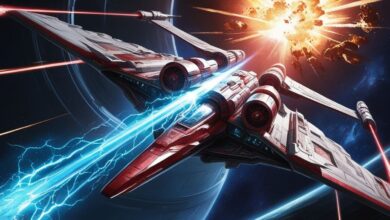Explained: The Evolution of Indian Special Forces

Hello defence lovers! From the snow-capped peaks of the Himalayas to the vast expanse of the Indian Ocean, India’s security hinges on the unwavering dedication of its armed forces. But within this formidable structure lies a tier of warriors, honed for a different breed of battle – India’s Special Forces. These elite units, shrouded in secrecy and mystique, are the tip of the spear, undertaking highly complex missions that safeguard the nation from a multitude of threats. In this article, we are going to explore the evolution of these special forces units throughout the history of India right from the Second World War to the present scenario.
What Are Special Forces?
Special Forces are elite military units trained to perform unconventional, high-risk missions that conventional forces may not be able to execute. These units are highly trained, well-equipped, and capable of operating in all environments, including land, air, and sea. Special Forces are often tasked with carrying out covert operations, counterterrorism missions, hostage rescues, intelligence gathering, and unconventional warfare.
The concept of Special Forces or elite military units designed for specific tasks can be traced back to various points in history. However, modern Special Forces units, as we understand them today, began to emerge during the 20th century, particularly during World War II. One of the earliest recognized Special Forces units was the British Special Air Service (SAS), founded in 1941 during World War II. The SAS was created to conduct raids and reconnaissance behind enemy lines in North Africa. They were highly effective in disrupting enemy operations and gathering intelligence.
Special Forces From The Indian Perspective
The Indian Army’s journey into specialized airborne units began in 1941 with the establishment of the 50th Indian Parachute Brigade, one of the earliest airborne units globally. After independence, the Indian army retained the 50th Indian Parachute Brigade consisting of specially nominated 1 PARA (Punjab), 2 PARA (Maratha) and 3 PARA (Kumaon) battalions. These soldiers did not have to wait long to prove their worth. The 50th Parachute Brigade demonstrated its valour at various battles of the first Indo-Pakistan war of 1947-48.
The Indo-Pakistani War of 1965 proved to be a turning point in the evolution of Indian special forces. The outstanding performance of an ad hoc commando unit called the Meghdoot Force during this conflict led to the formal establishment of dedicated commando units within the Parachute Regiment. Initially formed as the 9th Battalion (Commando), these units were later split into two separate battalions: 9 PARA (Commando) and 10 PARA (Commando). Each battalion was tasked with specific operational mandates, with 10 PARA focused on the Western Desert and 9 PARA operating in the northern mountains.


Para (SF): A Legacy Forged in War and Insurgency

As discussed above the 1965 Indo-Pakistani War exposed the need for a dedicated special forces unit. The impromptu Meghdoot Force, formed during the war, became the nucleus for the Para (SF). Rigorously trained for airborne operations, counter-terrorism, and deep penetration missions, the Para (SF) played a pivotal role in the 1971 Bangladesh liberation war. Operating behind enemy lines, Para SF units conducted clandestine operations to gather intelligence, disrupt enemy logistics, and sabotage communication networks. They also carried out reconnaissance missions to identify key enemy positions for targeted airstrikes and artillery bombardment, supporting conventional forces in their offensive manoeuvres. Additionally, Para SF teams conducted raids and ambushes on Pakistani military installations, supply depots, and communication centres to inflict casualties and create confusion among enemy ranks. Moreover, they provided crucial support to the Mukti Bahini in East Pakistan, assisting in guerrilla warfare, sabotage, and intelligence gathering, which contributed significantly to the liberation war.
During the insurgency in the Kashmir Valley post-1990s, Para SF underwent significant evolution to adapt to the complexities of counterinsurgency operations in the region. As the conflict escalated, Para SF units were increasingly deployed to tackle insurgents and restore peace in the valley. The insurgency in Kashmir presented unique challenges, including asymmetric warfare, urban combat, and the presence of foreign militants, necessitating specialized training and tactics for effective operations.
Para SF units refined their training to focus on urban warfare, close-quarters combat, and counterinsurgency tactics to confront insurgents operating in densely populated areas. They were trained to conduct surgical strikes, raids, and targeted operations against militant hideouts and networks while minimizing collateral damage and civilian casualties. Additionally, Para SF personnel received specialized training in intelligence gathering, surveillance, and interrogation techniques to dismantle insurgent cells and disrupt their activities.
Moreover, Para SF units collaborated closely with other security forces, including the Indian Army’s Rashtriya Rifles, Central Reserve Police Force (CRPF), and Jammu and Kashmir Police, to coordinate joint operations and intelligence-sharing efforts. This synergy between different security agencies enhanced the effectiveness of counterinsurgency operations and improved the overall security situation in the Kashmir Valley.
in recent times, Para SF came into the limelight after the 2015 cross-border surgical strikes in Myanmar against NSCN-K terrorists and the 2016 surgical strikes in Pakistan-Occupied Kashmir across LoC against Pakistan-sponsored militants.


MARCOS: Taming the Seas

Marine Commandos, popularly known as MARCOS, stand as the vanguard of India’s maritime security apparatus. Inspired by the US Navy SEALs, it was established in 1987. MARCOS emerged from the imperative need to safeguard India’s extensive coastline and vital maritime interests. As threats ranging from piracy to terrorism loomed large, the Indian Navy recognized the necessity for specialized units capable of operating effectively in the maritime domain.
MARCOS has one of the most difficult commando training regimes in the world. Selected from the ranks of the Indian Navy, MARCOS undergo extensive training in maritime operations, amphibious warfare, combat diving, and counterterrorism tactics. Their training, often conducted in challenging conditions, prepares them to operate in diverse environments, including coastal regions, oceans, and hostile waters.
Throughout their history, MARCOS have executed several landmark operations that underscore their prowess and contribution to national security. Their baptism by fire came during the Sri Lankan Civil War, where they conducted successful operations against the LTTE. One of their landmark operations was their pivotal role during the 2008 Mumbai terrorist attacks. MARCOS units were swiftly deployed to neutralize the terrorists holed up in various locations across the city, especially in Hotel Taj. They were the first responders to the situation and contained the terrorists until the NSG arrived. Their precise and swift actions helped minimize casualties and brought the situation under control.
MARCOS have also played a crucial role in safeguarding India’s maritime borders and interests. They have been actively involved in counter-piracy operations in the Gulf of Aden, conducting patrols, escorting merchant vessels, and apprehending pirates. Additionally, MARCOS have conducted numerous clandestine reconnaissance missions, intelligence gathering operations, and hostage rescue missions, both domestically and internationally of which only a fraction of operations is known to the general public.


Garud Commando Force

The terrorist attacks on IAF bases in Jammu Kashmir during the early 2000s exposed the vulnerability of Indian airbases and compelled the Indian airforce to raise a force of their own to protect their airbases. In 2004, the IAF addressed this gap by forming the Garud Commando Force. These elite warriors were specifically tasked with:
- Airbase Defense: Garuds are highly trained in close-quarter combat and counter-insurgency tactics. They are the first line of defence against ground threats attempting to infiltrate IAF bases.
- Combat Search and Rescue (CSAR): Imagine an IAF pilot downed behind enemy lines. In such a dire situation, Garuds come to the rescue. They are experts in conducting daring operations to retrieve personnel in hostile territory, even under fire.
- Special Operations: The Garuds’ skillset extends beyond pure defence. They can be deployed for specialized IAF operations, including hostage rescue within airbases or other critical situations.
During the Pathankot Air Force Base attack in 2016, terrorists infiltrated the base in a desperate attempt to inflict damage. However, the Garuds’ swift and decisive action played a pivotal role in neutralizing (hoorifying) the terrorist. In essence, the Garud Commandos are force multipliers for the IAF. Their presence strengthens airbase security, allowing the IAF to focus on its core function of airpower projection.


Also Read, Is Tavor Still Good Enough For Our Special Forces?
Conclusion
There’s a saying that chills even the most hardened soldier: “The most dangerous weapons are those that breathe.” India’s special forces embody that very essence. These aren’t just weapons; they’re honed individuals, perfectly adapted to navigate the treacherous terrains of India’s vast landscape – from the oceans patrolled by the MARCOS to the jungles where Para SF commandos vanish like phantoms, to the bone-chilling heights of the Himalayas where the SFF operates like ghosts in the snow. No matter the enemy’s chosen sanctuary, India’s special forces are a constant, chilling reminder: nowhere is truly safe. They are the guardians who operate in the shadows, the tip of the spear that ensures India’s security remains uncompromised.





